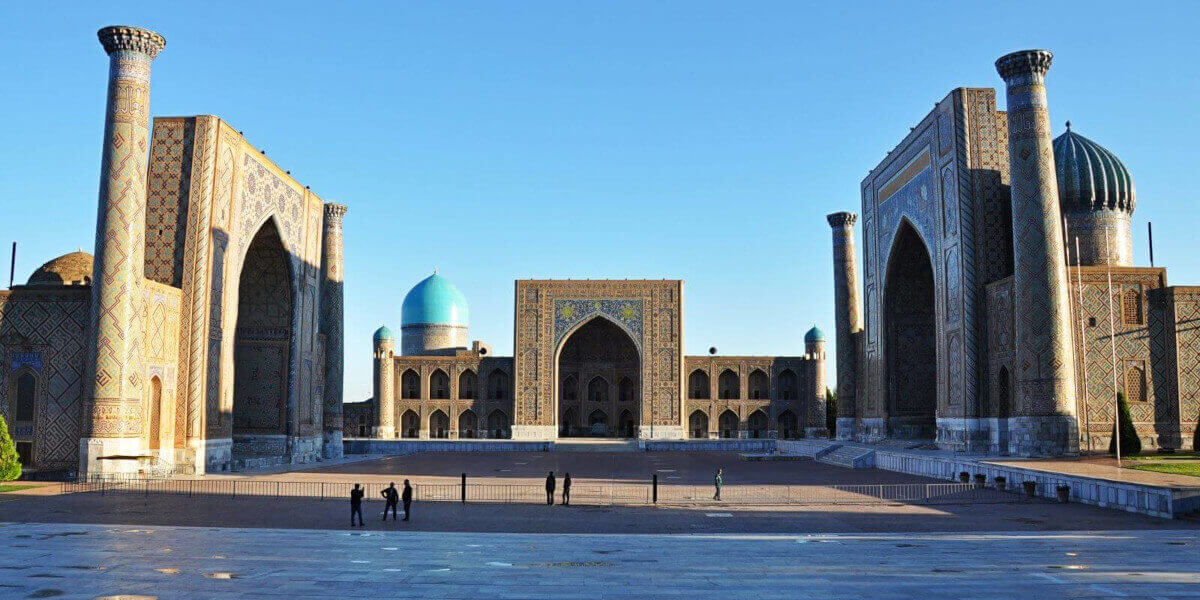Samarkand – name origin
There are several versions of the origin of the name Samarkand. A legend speaks of Samara, who inherited the land and founded a village (“kent”) with his name. In another version, the town was founded by a king named Samar, and was later populated by a clan of Turkic origin called “Kand”. Writer Mahmud al-Kashgari, who wrote his famous “Collection of Languages of the Turkic Peoples” in the 11th century, derived the city’s name from “Semizkent”, which was translated as “a rich city”. In Greek and Roman sources, the town is mentioned as Marakanda.

History of Samarkand
The oldest part of Samarkand is the ancient settlement of Afrasiab, located on a 220-hectare hill. From the 8th century BC, life flourished here until the Mongol invasion in 1220, when Genghis Khan’s troops conquered and destroyed the city. The ruins were abandoned, and life shifted to the south, where a new city was built. The original settlement area, which was called Afrasiab (after the legendary king of Turan) only since about the 18th century, fell into oblivion. There are no residential buildings in the area even today, but a large cemetery. The famous complex Shakhi-Zinda is also located in the area of Afrasiab.
Samarkand was both the capital of the Sogdian state (on the present territory of Uzbekistan and Tajikistan) until the 10th century and of the Timurid Empire, which flourished in the 14th and 15th centuries. In the 19th century, Samarkand became part of the Russian Turkestan; the city came under the influence of the architecture of tsarist Russia. Buildings from this period are still standing. After the foundation of the Uzbek Soviet Republic in 1924, Samarkand became the first capital and held this status until 1930.
540,000
population
2750 years
age of Samarkand
720 Metres
above sea level

samarkand for tourists
The city is characterized by monuments from the time of the Timurid Empire: majestic and extraordinary architectural constructions were built in this epoch. One of the most famous ensembles is Registan Square, which is framed by three beautiful madrasas.
In contrast to the open-air museums Bukhara and Khiva, the historical buildings of Samarkand are spread all over the city. To have a vehicle is an advantage for a visit. Due to this decentralization, hotels and restaurants are spread all over the city.
Festival: Registan Square hosts the Sharq Taronalari Festival every two years, which means “Melodies of the Orient”. This music festival usually takes place in August.
Flight connections: Samarkand has an international airport, which is approached from various Russian cities and Istanbul. There are local flights to Tashkent.
Railway connections: Samarkand railway station offers fast and comfortable connections to Tashkent, Bukhara and Karshi. There are also slow trains to other cities.